
空间科学与技术(英文)(Space:Science & Technology)
- 国级普刊
- 主管单位:
工业和信息化部
- 主办单位:
北京理工大学
- 国际刊号:
: 2692-7659
- 国内刊号:
10-1811/V
- 学科分类:
- 字数:
-
- 有无基金:
- 周期:
CN外文-双月刊
- 特殊属性:
外文期刊
- 电话:
010-68914772;010-68948375
- 邮箱:
space@science-bitpjournal.org.cn(官网邮箱)
- 复合因子:
0
- 综合因子:
0
- 收录:
- 级别:
国级普刊
期刊简介
《空间科学与技术》期刊已被查看: 次
更新频次
单位占比
一作占比
投稿指南
1、投稿方式:在线投稿。
2、官网网址:
https://spj.sciencemag.org/journals/space/
3、投稿系统:
https://www.editorialmanager.com/space/default.aspx
4、主办单位相关网址:
http://www.bitpress.com.cn/journal/space.html
(北京理工大学出版社)
5、邮箱:
space@science-bitpjournal.org.cn(公众号信息)
6、电话:010-68914772(公众号信息)
010-68948375(北京理工大学出版社官网信息)
7、出刊日期:双月刊,逢单月出版。
8、官方微信公众号:空间科学与技术
2024年5月21日星期二
《空间科学与技术(英文)》期刊简介
【微信公众号信息】
Space:Science & Technology (《空间科学与技术(英文)》)是北京理工大学(BIT)、中国空间技术研究院(CAST)和美国科学促进会(AAAS)/ Science共同打造的综合性高水平国际化英文科技期刊,同时也是AAAS自创建Science期刊以来的第一本航天领域的伙伴期刊。“人民科学家”国家荣誉称号获得者、中国科学院院士、中国空间技术研究院顾问叶培建研究员担任主编。国际宇航科学院生命科学学部主席、北京理工大学邓玉林教授担任执行主编。
期刊旨在聚焦国际航天领域最新发展方向和趋势,展示航天领域最新研究与探索活动中发现的新理论、新应用与新成果,推动航天的探索研究,引领航天领域交叉科学的快速融合与技术突破,为专业研究人员和工程技术人员提供专业的学术交流和信息传播平台。
期刊于2021年2月正式发布创刊词,目前已入选中国科技期刊卓越行动计划高起点新刊项目,同时被Ei Compendex、Web of Science核心合集ESCI、Scopus、INSPEC、DOAJ、CNKI、SAO/NASA-ADS等数据库收录。
联系我们
期刊官网:
https://spj.science.org/journal/space/
公众号内容由Space: Science & Technology期刊编辑部撰写。
想了解更多期刊信息,或咨询投稿事宜,欢迎您联系SPACE编辑部:
Email:
space@science-bitpjournal.org.cn
Tel: 010-68914772
我们会及时与您取得联系,谢谢!
《空间科学与技术(英文)》期刊简介
(Space:Science & Technology)
【北京理工大学出版社官网信息】
Space:Science & Technology (空间科学与技术)
简介
Space:Science & Technology (空间科学与技术)是北京理工大学(BIT)、中国空间技术研究院(CAST)和美国科学促进会(AAAS)/ Science共同打造的综合性高水平国际化英文科技期刊,采用开放获取(OPEN ACCESS,OA)平台出版,本刊是美国科学促进会(AAAS)自1880年创建Science期刊以来的第一本航天领域的伙伴期刊。本刊由工业和信息化部主管,美国科学促进会(AAAS)和北京理工大学出版社联合出版发行。国内统一连续出版物号为CN10-1811/V。
期刊由“人民科学家”国家荣誉称号获得者、中国科学院院士、中国空间技术研究院顾问叶培建研究员担任主编。国际宇航科学院生命科学学部主席、北京理工大学邓玉林教授担任执行主编。
办刊宗旨
期刊旨在聚焦国际航天领域最新发展方向和趋势,展示航天领域最新研究与探索活动中发现的新理论、新应用与新成果,推动航天的探索研究,引领航天领域交叉科学的快速融合与技术突破,为专业研究人员和工程技术人员提供专业的学术交流和信息传播平台。
研究范围
Space:Science & Technology (空间科学与技术)发表文章类型包括:研究类文章、综述类文章、短通讯、视点/观点、编者寄语等。
本刊以空间科学、空间技术、空间应用作为三个主要方向,主题包含但不限于:
● 空间科学:
天体物理学;行星科学和深空探索;地球科学;基础物理学;航天医学;生命科学;材料科学。
● 空间技术:
航天器系统设计;制导、导航和控制;航天动力和推进;航天先进材料;机器人与人工智能;太空制造;环境控制和生命支持系统;原位资源利用。
● 空间应用:
数据系统;空间天气和空间灾害预警;发射、通信和导航基础设施;地外样品收集和管理设施;未来月球和火星科研站;空间法律与政策。
办刊成果
Space:Science & Technology (空间科学与技术)已入选2020年度中国科技期刊卓越行动计划高起点新刊项目。国际刊号为 ISSN:2692-7659。期刊文章已于2021年正式上线,为双月刊。期刊收录文章将在 Science 官方网站上为广大读者提供免费阅读和下载服务。
Space:Science & Technology (空间科学与技术)已收到DOAJ数据库的通知,被该数据库正式收录。(DOAJ是世界知名的开放获取期刊检索系统,被其收录的期刊均为经过严格审核后的OA期刊。)期刊主编、执行主编和各位编委对本刊给予了大力支持,Space:Science & Technology (空间科学与技术)于2021年3月22日向该数据库提交收录申请,一次性通过审核并于2021年4月8日正式被收录。
Space: Science & Technology (空间科学与技术) 已于2021年9月被美国航天局SAO/NASA 天文物理学数据库收录,2021年12月确认被英国机电工程师学会INSPEC[科学文摘]数据库收录。
期刊特色
● 高效传播:所有收录文章,将在 Science 官方网站上为读者提供免费下载服务,Science 期刊的营销和推广将为作者的研究成果提供更为广泛和有效的宣传。
● 开放获取:所有读者将更为便利地获取作者的学术思想以便助力读者的科学研究,读者无需承担任何费用。
● 快速发表:稿件处理流程快速且保证同行评审质量。作者在稿件提交后平均一个月内获得审稿决定。
● 免费发表:作者在2023年7月之前发表无需承担发表费用,文章处理费用由期刊主办方承担。
联系方式
期刊官网:https://spj.sciencemag.org/journals/space/
咨询投稿,请联系SPACE期刊编辑部:
Email:space@science-bitpjournal.org.cn
Tel: 010-68948375
我们会及时取得联系,谢谢!
《空间科学与技术(英文)》作者须知
(Space:Science & Technology)
【官网信息】
For Authors
To check on the status of your submission, please visit Space: Science & Technology’s manuscript submission site.
For general guidance on using the manuscript submission system, please read the tutorials for Authors, Editors, and Reviewers. For questions on specific functionality, explore the Editorial Manager video library.
Categories of Manuscripts
The journal Space: Science & Technology considers submissions for Research Articles, Review Articles, Editorials and Perspectives. Prior to submission, each author should review and be prepared to fulfill the submission requirements outlined in the Publication Ethics page and comply with following limitations.
Research articles should present a major advance and must include an abstract of up to 250 words, an introduction and sections with brief and informative subheadings. Authors may include up to ten figures and/or tables and about 60 references. Total research article length should be under 15,000 words. Supplementary materials should be limited to information that is not essential for the general understanding of the research presented in the main text and can include data sets, figures, tables, videos or audio files. Please see the submission requirements for research articles in the following section. For ease in preparing your submission, please follow the manuscript templates in Word and LaTex.
Review articles should describe and synthesize recent developments of interdisciplinary significance and highlight future directions. Reviews must include an abstract, an introduction that outlines the main theme, brief subheadings and an outline of important unresolved questions. Reviews should be no longer than 8,000 words, although longer manuscripts will be considered. Authors may include up to six figures and/or tables and up to 100 references. Most reviews are solicited by the editors. Unsolicited submissions will be considered, and authors are encouraged to contact the Editors first before writing a review paper.
Perspectives highlight recent exciting research, but do not primarily discuss the author’s own work. They may provide context for the findings within a field or explain potential interdisciplinary importance. Perspectives that comment on papers in Space: Science & Technology should add a dimension to the research and not merely be a summary of the experiments described in the paper. As these are meant to express a personal viewpoint, with rare exceptions, Perspectives should have no more than one author. Perspectives should include an abstract and have no more than 1,000 words and one figure or table.
Rapid Reports present ground-breaking developments or discoveries in the field. Submissions must include a short abstract (maximums of 150 words), ten references or fewer, and two data elements (any combination of figures or tables). Manuscripts should be divided into an introduction, a combined results and discussion section, and materials and methods. Total length should be less than 1,000 words excluding the abstract, materials and methods, and references. Junior scientists are encouraged to contribute their promising works as rapid reports.
Editorials are short, invited opinion pieces that discuss an issue of immediate importance to the research community. Editorials should have fewer than 1,000 words total, no abstract, a minimal number of references (no more than five) and no figures or tables. Editorials are only solicited by the editors.
Preparation of Manuscripts
English Language Editing Services
Interested in English language assistance prior to submission? The Science Partner Journals publishing team has evaluated the work of the companies listed on the SPJ Author Services page and found their services to be effective for editing scientific English language in manuscripts prior to submission.
Experimental Design and Statistics Guidelines
Study Design Guidelines
In the first section of the Materials and Methods, we encourage authors to have first subtitle of "Experimental and Technical Design", which includes a diagram or flowchart to show the entire experimental design and illustrates the most significant elements: materials, treatments, measurements, data collection, methods of data analysis. This will facilitate the editors, reviewers and readers to understand and follow the whole concept, design, and results.
Statistical Analysis Guidelines
Generally, authors should describe statistical methods with enough detail to enable a knowledgeable reader with access to the original data to verify the results.
Reporting Guidelines
Authors are encouraged to follow published standard reporting guidelines for the study discipline. Many of these guidelines can be found at the EQUATOR website.
Figure, Table, & Supplementary Material Guidelines
Creating Your Figures
It is best to create your figures as vector-based files such as those produced by Adobe Illustrator. Vector-based files will give us maximum flexibility for sizing your figures properly without losing resolution. These figure files can be saved at a lower resolution to minimize the file size at initial submission.
Although we do not need the highest-resolution files for the initial submission, you will need to have these high-resolution files of your figures on hand so that they can be submitted with your revised manuscript for final publication production. Each figure or image must be in a separate editable file format at revision. Images may be in TIFF, GIF, JPEG, PNG, BMP, PS, EPS, Word, Excel, PowerPoint, or PDF.
Figure Layout and Scaling
In laying out information in a figure, the objective is to maximize the space given to presentation of the data. Avoid wasted white space and clutter.
Please follow these guidelines for your figures:
The figure’s title should be at the beginning of the figure legend, not within the figure itself.
Include the figure’s identifying number (e.g., "Figure 1") on the same manuscript page that includes the figure.
Keys to symbols, if needed, should be kept as simple as possible. Details can be put into the figure legend.
Use solid symbols for plotting data if possible (unless data overlap or there are multiple symbols). For legibility when figures are reduced, symbol sizes should be a minimum of 6 points and line widths should be a minimum of 0.5 points.
Panels should be set close to each other and common axis labels should not be repeated.
Scales or axes should not extend beyond the range of the data plotted. All microscopic images should include scale bars, with their values shown either with the bar or in the figure legend. Do not use minor tick marks in scales or grid lines. Avoid using y-axis labels on the right that repeat those on the left.
Color-mix and Contrast Considerations
Avoid using red and green together. Color-blind individuals will not be able to read the figure.
Do not use colors that are close to each other in hue to identify different parts of a figure.
Avoid using grayscale.
Use white type and scale bars over darker areas of images.
Typefaces and Labels
Please observe the following guidelines for labels on graphs and figures:
Use a serif font whenever possible.
Simple solid or open symbols reduce well.
Label graphs on the ordinate and abscissa with the parameter or variable being measured, the units of measure in parentheses and the scale. Scales with large or small numbers should be presented as powers of 10. (When an individual value must be presented as an exponential, use correct form: 6 × 10 –3 , not 6e-03.)
Avoid the use of light lines and screen shading. Instead, use black-and-white, hatched, and cross-hatched designs for emphasis.
Capitalize the first letter in a label only, not every word (and proper nouns, of course).
Units should be included in parentheses. Use SI notation. If there is room, write out variables—e.g., Pressure (MPa), Temperature (K).
Variables are always set in italics or as plain Greek letters (e.g., P, T, µ). Vectors should be set as roman boldface (rather than as italics with arrows above).
Type on top of color in a color figure should be in boldface. Avoid using color type.
When figures are assembled from multiple gels or micrographs, use a line or space to indicate the border between two original images.
Use leading zeros on all decimals—e.g., 0.3, 0.55—and only report significant digits.
Use small letters for part labels in multipart figures enclosed in brackets, (a), (b), (c), etc.
Avoid subpart labels within a figure part; instead, maintain the established sequence of part labels, using small or lower-case letters. Use numbers (1, 2, 3) only to represent a time sequence of images.
When reproducing images that include labels with illegible computer-generated type (e.g., units for scale bars), omit such labels and present the information in the legend instead.
Modification of Figures
Space: Science & Technology does not allow certain electronic enhancements or manipulations of micrographs, gels or other digital images.
Figures assembled from multiple photographs or images must indicate the separate parts with lines between them.
Linear adjustment of contrast, brightness or color must be applied to an entire image or plate equally. Nonlinear adjustments must be specified in the figure legend.
Selective enhancement or alteration of one part of an image is not acceptable.
In addition, Space: Science & Technology may ask authors of papers returned for revision to provide additional documentation of their primary data.
……
更多详情:
https://spj.sciencemag.org/journals/space/guidelines/
上一篇:燕赵文化研究(集刊)下一篇:循证社会科学(集刊)
《空间科学与技术》同类航天工程期刊
-
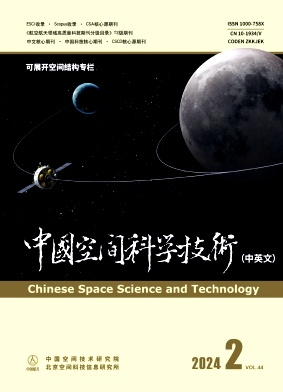
中国空间科学技术(中英文)(不收版面费审稿费)
北核,CSCD,科核,武A,高T2
CN中文-双月刊影响因子1.42
-

空间科学学报
北核,CSCD,科核,高T1,高T2,高T3
CN中文-双月刊影响因子0.526
-
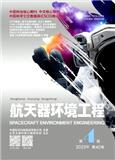
航天器环境工程(不收版面费审稿费)
CSCD,科核,武B+
CN中文-双月刊影响因子0.882
-
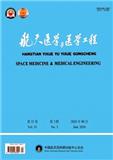
航天医学与医学工程
科核,武A-
CN中文-双月刊影响因子0
-
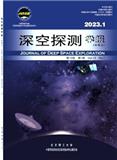
深空探测学报(中英文)
北核,CSCD,科核,武B+
CN中文-双月刊影响因子1.201
-
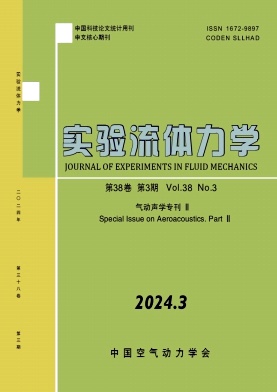
实验流体力学(原:气动实验与测量控制 流体力学实验与测量)
北核,CSCD,科核,高T3,武B+
CN中文-双月刊影响因子0.886
-
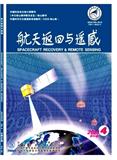
航天返回与遥感(不收版面费审稿费)
北核,CSCD,科核,武A-
CN中文-双月刊影响因子1.304
-
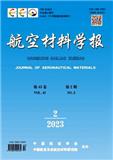
航空材料学报
北核,CSCD,科核,武A+,高T2
CN中文-双月刊影响因子2.529
常见问题
-
空间科学与技术杂志社官网、联系方式是什么?
空间科学与技术杂志社官网:https://spj.sciencemag.org/journals/space/
投稿网址:https://www.editorialmanager.com/space/default.aspx联系电话:010-68914772;010-68948375
投稿邮箱:space@science-bitpjournal.org.cn(官网邮箱) -
空间科学与技术杂志是核心期刊么?
空间科学与技术不是核心期刊,级别是:国级普刊, 是:航天工程分类下的
-
请问你们是空间科学与技术杂志社吗?
我们不是《空间科学与技术》杂志社。本站主要从事期刊信息展示与期刊推荐,不是任何杂志官网,直投稿件请联系杂志社。本站仅提供免费的学术指导、论文辅导、期刊投稿信息整理收集服务。
-
你们指导服务后可以保证文章被发表吗?
期刊发表的成功与否,主要取决于文章内容的质量。编辑老师会根据研究领域、创新性等多因素进行考量。我们会帮助您理解期刊的发表要求,助力提升发表几率,从而增加发表的机会。
-
晋级论文能否在报纸上发表?
在学术界,论文的发表往往被视为研究者职业发展的重要一环。晋级论文,即为了获得更高职称或学术地位而撰写的学术论文,通常需在专业期刊上发表。然而,许多人可能会问
